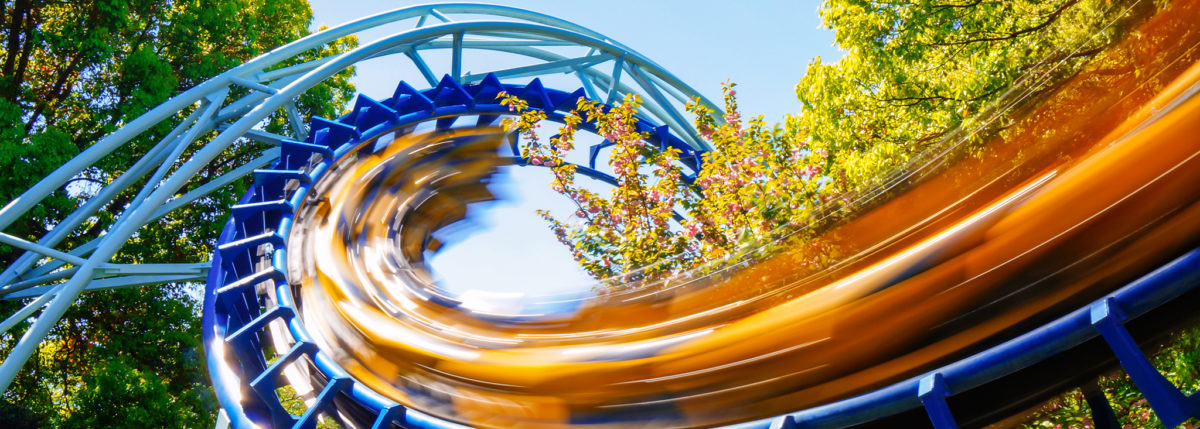Navigating Amusement Parks with T1D
Regardless of the time of year, visits to an amusement park are always fun excursions shared by friends, family, or even on your own! Whether it be a Disney Park, Universal Studios, Six Flags, or any number of other theme parks peppered throughout the country (and the world), there will be something exciting to do, ride or eat!
So it goes for any adventure that takes us away from routine and into the elements, unfamiliar territory, or in large crowds, people with type 1 diabetes should be fully prepared and in-the-know before heading off to their favorite themed land.
Packing List
- Backpack (large enough for all your supplies)
- Frio cooling wallet
- Test Strips
- Blood glucose (BG) Monitor (& batteries)
- Backup Infusion Sets & Batteries (for pump)
- Insulin Pens or Syringes
- Continuous glucose monitor (CGM) + Backup Sensor
- Nasal Glucagon (BAQSIMI) or Glucagon Kit
- Pump & CGM Clips or Pockets
- Medical Alert ID/Bracelet
- Adhesive tape
- Water
- Quick sugar: (Glucose tabs/gels, juice, shot bloks)
- Nuts/Nut butters pouches
- Nutrition bars
Know Before You Go!
Crowds & Lines
When we think of amusement parks, one of the first things that come to mind are the crowds and the long lines!
- You will likely be standing up for long periods of time (when you aren’t walking,) so be mindful of your blood sugar levels and take breaks, have a snack, or get out of line if necessary.
- DAS Card: The “DAS Card” stands for Disabilities Access Service, and is available at many theme parks, including Disneyland and Disney World, although at different parks it may be called something different. This card allows for people who are not able to wait in long lines to come back at a designated time and skip to the front of the line. Hypoglycemia as a result of type 1 diabetes (T1D) would be the reason given when requesting one of these cards. Be sure to show your medical alert ID, prescription, or a note from your doctor at the Guest Services area of any amusement park.
- Grab a map of the park before heading in! It is easy to get lost in large crowds, and it is important to have clarity of your whereabouts.
- Have a plan! If splitting up, let your friends or family know where you are going and have a time and place to meet back with them. Know everyone in your party’s cell numbers.
Security Screening
Most amusement parks do not have separate security screening lines for those with medical needs, so be prepared to show your medication, doctors notes (not required, but could help expedite screening), and medical alert IDs. It is a good idea to tell the security employee before they search your bag that you have type 1 diabetes and are carrying supplies.
First Aid Facility
One of the first things to do when entering an amusement park is to locate the First Aid Facility! It is usually near Guest Services and the entrance, but confirm on your map. If needed, they will be able to store your insulin in the fridge for you.
Other Things to Consider
- If you’re visiting an amusement park in the summer months, keep in mind that the affects of heat have been known to drop blood sugar levels when there is insulin working in the system. Heat causes the body’s blood vessels to expand, which speeds up the insulin absorption rate. This can be made worse with vigorous walking or running due to the increased blood flow to certain areas, so avoid injecting insulin into the legs!
- Insulin and other supplies must be kept cool! If exposed to extreme heat for too long, insulin will become ineffective. The heat can also alter the effectiveness of supplies such as test strips and BG meters.
- When you sweat, pump and CGM sensor site adhesive can become less effective. Bring extra supplies, and/or bring adhesive tape.
- STAY HYDRATED!!! Dehydration can cause a spike in blood sugar levels. When the body is dehydrated, blood glucose becomes more concentrated due to the decrease in blood flow through the kidneys. WATER should always be your #1 beverage of choice in the heat, but drinks such as non-caffeinated iced herbal teas and “sport” waters are effective as well. Drinks that act as diuretics or that contain high caffeine or sodium content (coffee, alcohol, carbonated sodas/energy drinks, milk) can dehydrate you.
Adrenaline
Some T1Ds experience high blood sugar levels when visiting amusement parks. Of course, it could be due to all the sugary foods available, but it might also be because of all the adrenaline! Adrenaline is released on thrill rides, and as a result, so is cortisol. Both hormones can make the body more resistant to insulin, so be sure to check your BG as needed and adjust your dosages as advised by your doctor.
Pump / CGM Function
Certain amusement park rides can tamper with pump and CGM function, although not all T1Ds experience this while using their devices at the parks. Due to high gravity forces and powerful electromagnets, it is recommended that you completely disconnect from your pump while on thrill rides, or opt to use insulin pens for your time at the park. Be prepared for CGM readings to be slightly less accurate after being exposed to strong electromagnetics. As always, consult with your healthcare provider before making decisions.





